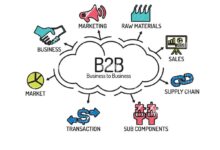B2B Cabinets: 7 Powerful Insights for Smart Business Buyers
When it comes to outfitting commercial spaces, industrial facilities, or office environments, one term you can’t ignore is b2b cabinets. These aren’t your average storage units—they’re strategic assets designed for durability, scalability, and seamless integration into professional workflows. Let’s dive into what makes them a game-changer.
What Are B2B Cabinets and Why Do They Matter?

The term b2b cabinets refers to storage and organizational units specifically designed and sold through business-to-business channels. Unlike retail cabinets meant for homes, these are engineered for high-traffic, demanding environments such as hospitals, laboratories, manufacturing plants, data centers, and corporate offices.
Defining the B2B Cabinet Concept
B2B cabinets are not just about storing items—they’re about optimizing space, enhancing safety, and supporting operational efficiency. These cabinets are typically sold in bulk to organizations that require standardized, durable, and often customizable storage solutions.
- They are built with commercial-grade materials like steel, aluminum, or reinforced composites.
- Designed for integration into larger systems (e.g., server racks, medical equipment units).
- Sold through direct sales, distributors, or online B2B marketplaces like Grainger or Fisher Scientific.
How B2B Cabinets Differ from Retail Cabinets
While retail cabinets focus on aesthetics and affordability for individual consumers, b2b cabinets prioritize function, compliance, and longevity. For example, a kitchen cabinet sold at a home improvement store may look sleek but won’t meet fire safety codes required in a commercial kitchen.
- B2B units often come with certifications (UL, OSHA, ISO).
- They support heavier loads and resist corrosion, impact, and wear.
- Customization options like locking mechanisms, ventilation, or modular shelving are standard.
“In industrial settings, the right cabinet isn’t a convenience—it’s a compliance requirement.” — Facility Management Today
The Evolution of B2B Cabinets in Modern Industry
The history of b2b cabinets traces back to the early 20th century when factories began standardizing equipment storage. However, the real transformation occurred with the rise of modular design, digital inventory systems, and global supply chains.
From Steel Lockers to Smart Storage
Early b2b cabinets were simple metal lockers or tool chests. Today, they’ve evolved into intelligent systems equipped with RFID tags, biometric locks, and IoT connectivity. For instance, smart cabinets in pharmaceutical labs can track who accessed which sample and when, ensuring audit compliance.
- Modern b2b cabinets integrate with ERP and CMMS software.
- Some feature real-time inventory alerts via cloud dashboards.
- Energy-efficient models reduce operational costs in data centers.
Impact of Automation and Industry 4.0
With Industry 4.0 reshaping manufacturing and logistics, b2b cabinets are becoming part of automated ecosystems. Robotic arms retrieve tools from smart cabinets, while AI-driven analytics predict maintenance needs based on usage patterns.
- Automated storage and retrieval systems (AS/RS) use b2b cabinets as core components.
- Predictive maintenance sensors embedded in cabinet hinges or locks reduce downtime.
- Digital twins allow virtual testing of cabinet layouts before physical installation.
Top 5 Industries That Rely on B2B Cabinets
B2B cabinets are mission-critical across several sectors. Their design, materials, and features vary significantly depending on the industry’s unique demands. Let’s explore the top five.
Healthcare and Medical Facilities
Hospitals and clinics use specialized b2b cabinets for storing medications, medical devices, and hazardous materials. These units must comply with HIPAA, FDA, and Joint Commission regulations.
- Medication dispensing cabinets with audit trails.
- Biohazard storage with leak-proof seals and warning labels.
- Autoclave-compatible instrument cabinets made from stainless steel.
For example, companies like Omnicell provide automated medication management systems used in over 6,000 healthcare facilities worldwide.
Information Technology and Data Centers
In IT infrastructure, b2b cabinets refer to server racks, network enclosures, and cable management units. These protect sensitive hardware from dust, temperature fluctuations, and unauthorized access.
- Rack-mounted cabinets with cooling systems and UPS integration.
- Lockable front and rear doors with keyless entry options.
- Modular designs that scale with growing data needs.
Brands like APC by Schneider Electric dominate this space, offering solutions that support everything from small server rooms to hyperscale data centers.
Manufacturing and Industrial Operations
Factories rely on b2b cabinets for tool organization, PPE storage, and chemical containment. Poor storage can lead to safety violations, lost productivity, or equipment damage.
- Heavy-duty cabinets rated for 1,000+ lbs of load capacity.
- Explosion-proof models for flammable material storage.
- Color-coded systems to support lean manufacturing principles like 5S.
A study by the National Safety Council found that proper tool storage reduced workplace injuries by 27% in manufacturing plants.
Education and Research Laboratories
Schools, universities, and R&D labs use b2b cabinets to store chemicals, specimens, and sensitive instruments. Safety and traceability are paramount.
- Fume hood-compatible storage with chemical resistance.
- Lockable drawers with individual access logs.
- Seismic-rated cabinets in earthquake-prone regions.
Suppliers like VWR International offer lab-specific b2b cabinets that meet ANSI and NFPA standards.
Commercial and Institutional Kitchens
Restaurants, hotels, and school cafeterias use b2b cabinets for food storage, utensil organization, and cleaning supply containment. These must resist moisture, grease, and frequent cleaning.
- Stainless steel construction with seamless welds to prevent bacterial growth.
- Adjustable shelving to accommodate bulk ingredients.
- Under-sink cabinets with leak detection systems.
The NSF International certification is a key benchmark for such cabinets, ensuring they meet public health and safety standards.
Key Features to Look for in High-Quality B2B Cabinets
Not all b2b cabinets are created equal. When sourcing for your organization, certain features can make the difference between a reliable asset and a costly liability.
Durability and Material Quality
The material determines the cabinet’s lifespan and suitability for specific environments. Common materials include:
- Steel: Ideal for heavy-duty applications; often powder-coated for corrosion resistance.
- Stainless Steel: Preferred in medical, food service, and lab settings due to its hygienic properties.
- Plastic/Polycarbonate: Lightweight and chemical-resistant, used for small component storage.
Always check for gauge thickness—lower gauge numbers mean thicker, stronger metal.
Security and Access Control
In environments where sensitive materials are stored, access control is non-negotiable. Modern b2b cabinets offer:
- Electronic locks with PIN or card access.
- Biometric scanners (fingerprint, facial recognition).
- Integration with building security systems (e.g., ADT, Honeywell).
For example, in a pharmaceutical lab, a cabinet might require dual authentication—one scientist and one supervisor—to access controlled substances.
Customization and Modularity
One-size-fits-all doesn’t work in B2B environments. The best b2b cabinets offer:
- Adjustable shelves, bins, and dividers.
- Interchangeable panels (solid, perforated, ventilated).
- Mounting options (floor-standing, wall-mounted, mobile).
Modular systems allow organizations to reconfigure storage as needs evolve, reducing long-term costs.
How to Choose the Right B2B Cabinets for Your Business
Selecting the right b2b cabinets involves more than just comparing prices. It requires a strategic assessment of your operational needs, space constraints, and compliance requirements.
Assess Your Storage Needs and Workflow
Start by mapping out what you need to store, how often it’s accessed, and who needs access. For example:
- A data center may prioritize cooling efficiency and cable management.
- A hospital pharmacy needs fast access to high-turnover medications.
- A factory floor requires rugged cabinets that withstand forklift traffic.
Conduct a storage audit to identify pain points like clutter, misplacement, or safety risks.
Evaluate Vendor Reliability and Support
Since b2b cabinets are long-term investments, vendor support matters. Look for suppliers that offer:
- Warranties of 5+ years.
- On-site installation and training.
- Replacement parts and retrofitting services.
Check reviews on platforms like LinkedIn or Trustpilot to gauge customer satisfaction.
Consider Total Cost of Ownership (TCO)
The sticker price is just the beginning. TCO includes:
- Installation and integration costs.
- Maintenance and repair expenses.
- Energy consumption (e.g., refrigerated cabinets).
- Downtime due to failures or inefficiencies.
A slightly more expensive cabinet with better durability and lower maintenance can save thousands over a decade.
Innovations Shaping the Future of B2B Cabinets
The future of b2b cabinets is smart, sustainable, and seamlessly connected. Emerging technologies are transforming these once-passive units into active participants in business operations.
IoT-Enabled Smart Cabinets
Internet of Things (IoT) integration allows cabinets to communicate with other systems. For example:
- A smart cabinet in a warehouse can alert managers when stock runs low.
- Temperature-sensitive units send alerts if refrigeration fails.
- Usage data helps optimize inventory turnover and reduce waste.
Companies like Rockwell Automation are leading the charge in industrial IoT solutions that include intelligent storage systems.
Sustainable and Eco-Friendly Designs
As ESG (Environmental, Social, and Governance) goals become central to business strategy, b2b cabinets are being redesigned with sustainability in mind.
- Recycled steel and plastic content.
- Energy-efficient cooling systems.
- End-of-life recyclability programs.
Some manufacturers now offer carbon footprint labels on their products, helping buyers make greener choices.
AI-Powered Inventory Management
Artificial intelligence is being used to predict usage patterns and automate reordering. AI-driven cabinets can:
- Learn which items are used most frequently.
- Suggest optimal placement for faster retrieval.
- Integrate with procurement systems to auto-generate purchase orders.
This reduces human error and ensures critical supplies are never out of stock.
Common Challenges and How to Overcome Them
Despite their benefits, implementing b2b cabinets isn’t without challenges. Organizations often face issues ranging from poor space planning to integration hurdles.
Space Constraints and Layout Issues
Many facilities struggle with limited floor space. The solution lies in vertical storage and modular designs.
- Use wall-mounted b2b cabinets to free up floor space.
- Opt for mobile cabinets on casters for flexible repositioning.
- Implement overhead storage systems in warehouses.
3D modeling software can help visualize cabinet placement before installation.
Integration with Existing Systems
Integrating new b2b cabinets with legacy systems (e.g., inventory software, security networks) can be complex.
- Choose cabinets with open API support for easier integration.
- Work with vendors who offer integration consulting.
- Phase in new cabinets gradually to minimize disruption.
For example, a hospital upgrading to smart medication cabinets might start with one department before scaling hospital-wide.
Training and User Adoption
Even the most advanced b2b cabinets fail if employees don’t use them correctly.
- Provide hands-on training sessions.
- Create quick-reference guides and video tutorials.
- Assign cabinet champions to support peers.
User adoption rates improve significantly when staff understand the benefits and ease of use.
Best Practices for Maintaining B2B Cabinets
Proper maintenance extends the life of b2b cabinets and ensures they continue to perform safely and efficiently.
Regular Inspections and Cleaning
Schedule routine checks for wear, corrosion, or mechanical issues.
- Inspect hinges, locks, and seals monthly.
- Clean surfaces with appropriate disinfectants (e.g., non-abrasive cleaners for stainless steel).
- Check ventilation systems in chemical storage cabinets.
Document inspections to meet compliance requirements.
Preventive Maintenance Schedules
Adopt a preventive maintenance approach rather than waiting for failures.
- Lubricate moving parts quarterly.
- Test electronic locks and alarms regularly.
- Replace worn gaskets or seals immediately.
Use CMMS (Computerized Maintenance Management Systems) to automate reminders and track service history.
Upgrading and Retrofitting Options
Instead of replacing entire cabinets, consider upgrades.
- Add smart locks to legacy units.
- Install LED lighting for better visibility.
- Upgrade shelving to accommodate new equipment.
Retrofitting is cost-effective and reduces waste.
What are b2b cabinets?
B2B cabinets are storage units designed and sold for business use, typically in industrial, medical, or commercial settings. They are built for durability, security, and compliance, differing significantly from consumer-grade cabinets.
What industries use b2b cabinets the most?
The top industries include healthcare (for medication and lab storage), IT (server racks), manufacturing (tool and PPE storage), education (research labs), and food service (commercial kitchens).
How do smart b2b cabinets work?
Smart b2b cabinets use IoT sensors, electronic locks, and cloud connectivity to monitor access, track inventory, and send alerts. They can integrate with enterprise software for real-time data management.
What should I look for when buying b2b cabinets?
Key factors include material durability, security features, customization options, compliance certifications, vendor support, and total cost of ownership. Always assess your specific operational needs first.
Can b2b cabinets be eco-friendly?
Yes, many modern b2b cabinets are made with recycled materials, energy-efficient components, and are designed for recyclability at end-of-life. Some manufacturers even offer take-back programs.
Choosing the right b2b cabinets is more than a procurement decision—it’s a strategic move that impacts safety, efficiency, and compliance. From healthcare to high-tech data centers, these storage solutions are evolving into intelligent, connected systems that support the backbone of modern business operations. By understanding their features, applications, and future trends, organizations can make informed investments that deliver long-term value. Whether you’re upgrading a single lab or outfitting an entire facility, prioritizing quality, scalability, and innovation in your b2b cabinets will pay dividends for years to come.
Further Reading:









